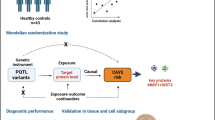Abstract
The purpose of this study was to evaluate the impact of vitamin D receptor (VDR) gene polymorphisms on the status of active renal calcium stone formation. Male active renal calcium stone formers (ASF, final N = 106) with two episodes of stone relapse in the past 5 years were enrolled from December 2008 to April 2009. Controls (N = 109) were selected from age range- and gender-matched individuals who had no evidence or history of stone disease. Sequencing and single-strand conformational polymorphism were used to determine VDR polymorphisms in the patients and controls. Three polymorphisms were identified in the VDR gene: (1) start codon polymorphism (rs2228570T>C; p.M1T); (2) C/T polymorphism in the second intron (NT-029419.12: g.10416049C>T); (3) a silent polymorphism in exon 9 (rs731236T>C; p.I352I). Start codon polymorphism was the only one that was associated with the status of calcium stone formation (p < 0.05). We performed a complete coding genome analysis of VDR gene and observed that only start codon polymorphism was related to the status of active calcium stone formation.

Similar content being viewed by others
References
Arai H, Miyamoto K, Taketani Y, Yamamoto H, Iemori Y, Morita K, Tonai T, Nishisho T, Mori S, Takeda E (1997) A vitamin D receptor gene polymorphism in the translation initiation codon: effect on protein activity and relation to bone mineral density in Japanese women. J Bone Miner Res 12:915–921
Bid HK, Chaudhary H, Mittal RD (2005) Association of vitamin-D and calcitonin receptor gene polymorphism in paediatric nephrolithiasis. Pediatr Nephrol 20:773–776
Chen WC, Chen HY, Lu HF, Hsu CD, Tsai FJ (2001) Association of the vitamin D receptor gene start codon Fok I polymorphism with calcium oxalate stone disease. BJU Int 87:168–171
Clubbe W (1874) Family disposition to urinary concretions. Lancet 1:823
Curhan GC, Willett WC, Rimm EB, Stampfer MJ (1997) Family history and risk of kidney stones. J Am Soc Nephrol 8:1568–1573
Griffin DG (2004) A review of the heritability of idiopathic nephrolithiasis. J Clin Pathol 57:793–796
Harvey JA, Zobitz MM, Pak CY (1989) Bioavailability of citrate from two different preparations of potassium citrate. J Clin Pharmacol 29:338–341
Haussler MR, Whitfield GK, Haussler CA, Hsieh JC, Thompson PD, Selznick SH, Dominguez CE, Jurutka PW (1998) The nuclear vitamin D receptor: biological and molecular regulatory properties revealed. J Bone Miner Res 13:325–349
Hess BT, Tiselius HG (2002) Physical–chemical process in kidney stone formation. In: Coe FL, Flavus MG (eds) Disorders of bone and mineral metabolism. Lippincott Williams & Wilkins, Philadelphia, pp 619–628
Jackman SV, Kibel AS, Ovuworie CA, Moore RG, Kavoussi LR, Jarrett TW (1999) Familial calcium stone disease: TaqI polymorphism and the vitamin D receptor. J Endourol Endourol Soc 13:313–316
Konwar R, Chattopadhyay N, Bid HK (2008) Genetic polymorphism and pathogenesis of benign prostatic hyperplasia. BJU Int 102:536–544
Li S, Yang MH, Zeng CA, Wu WL, Huang XF, Ji Y, Zeng JQ (2008) Association of vitamin D receptor gene polymorphisms in Chinese patients with generalized aggressive periodontitis. J Periodontal Res 43:360–363
Mossetti G, Rendina D, Viceconti R, Manno G, Guadagno V, Strazzullo P, Nunziata V (2004) The relationship of 3′ vitamin D receptor haplotypes to urinary supersaturation of calcium oxalate salts and to age at onset and familial prevalence of nephrolithiasis. Nephrol Dial Transplant 19:2259–2265
Parks JH, Coe FL (1986) A urinary calcium-citrate index for the evaluation of nephrolithiasis. Kidney Int 30:85–90
Relan V, Khullar M, Singh SK, Sharma SK (2004) Association of vitamin D receptor genotypes with calcium excretion in nephrolithiatic subjects in northern India. Urol Res 32:236–240
Rendina D, Mossetti G, Viceconti R, Sorrentino M, Castaldo R, Manno G, Guadagno V, Strazzullo P, Nunziata V (2004) Association between vitamin D receptor gene polymorphisms and fasting idiopathic hypercalciuria in recurrent stone-forming patients. Urology 64:833–838
Ruggiero M, Pacini S, Amato M, Aterini S, Chiarugi V (1999) Association between vitamin D receptor gene polymorphism and nephrolithiasis. Miner Electrolyte Metab 25:185–190
Scott P, Ouimet D, Valiquette L, Guay G, Proulx Y, Trouve ML, Gagnon B, Bonnardeaux A (1999) Suggestive evidence for a susceptibility gene near the vitamin D receptor locus in idiopathic calcium stone formation. J Am Soc Nephrol 10:1007–1013
Shakhssalim N, Gilani KR, Parvin M, Torbati PM, Kashi AH, Azadvari M, Golestan B, Basiri A (2011) An assessment of parathyroid hormone, calcitonin, 1,25 (OH)2 vitamin D3, estradiol and testosterone in men with active calcium stone disease and evaluation of its biochemical risk factors. Urol Res 39:1–7
Uitterlinden AG, Fang Y, Van Meurs JB, Pols HA, Van Leeuwen JP (2004) Genetics and biology of vitamin D receptor polymorphisms. Gene 338:143–156
Zmuda JM, Cauley JA, Ferrell RE (2000) Molecular epidemiology of vitamin D receptor gene variants. Epidemiol Rev 22:203–217
Acknowledgments
This study was supported by grants from the Iranian Special Medical Centre (Charity Foundation for Special Diseases) and the Urology and Nephrology Research Centre (UNRC).
Author information
Authors and Affiliations
Corresponding author
Rights and permissions
About this article
Cite this article
Basiri, A., Shakhssalim, N., Houshmand, M. et al. Coding region analysis of vitamin D receptor gene and its association with active calcium stone disease. Urol Res 40, 35–40 (2012). https://doi.org/10.1007/s00240-011-0399-1
Received:
Accepted:
Published:
Issue Date:
DOI: https://doi.org/10.1007/s00240-011-0399-1




